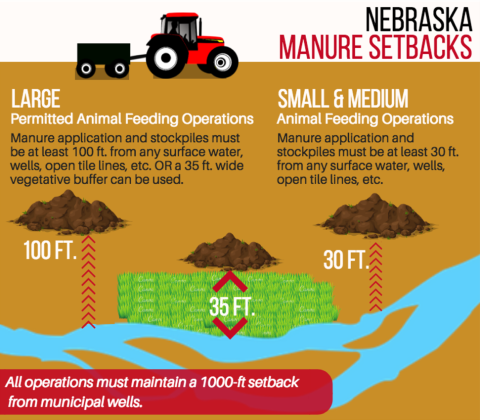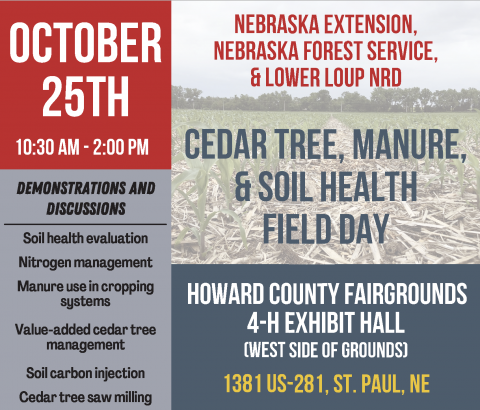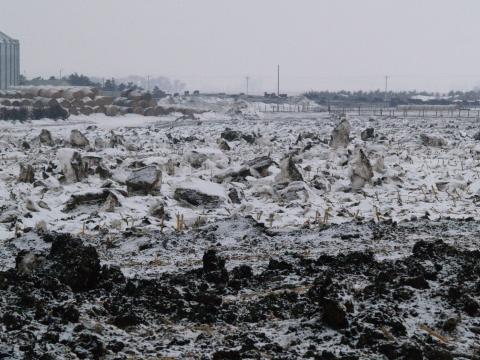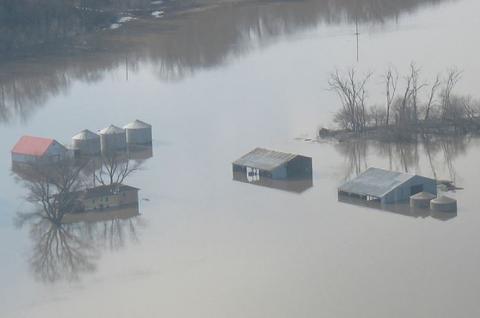Tips for Winter Manure Application
December 15, 2023
Manure application during winter can be a difficult management decision. Consider these points while planning where, when and how to apply manure.
Carbon Sources for Composting HPAI Mortalities
April 21, 2022
Nebraska Extension is calling on businesses and residents to donate or sell wood chips, hay, lawn waste and other carbon sources to livestock producers hit hard by Highly Pathogenic Avian Influenza (HPAI).
New UNL Manure Nitrogen Crediting Recommendations for Crop Fertility
April 4, 2022
This UNL Water article breaks down the new recommendations for crediting nitrogen following manure applications and how this will impact Nebraska growers.
Cedar Tree, Manure and Soil Health Field Day Set for Oct. 25
October 1, 2021
Join us for a field day on October 25th at the Howard County Fairgrounds and discover how cedar mulch can be combined with manure to improve soil health.
Tips for Winter Manure Application
December 2, 2020
A blanket of fresh white snow and icicles hanging from the trees and fences make for beautiful winter photos. They don’t, however, make for beautiful manure application weather.
Proposed Changes to Nebraska Recommendations for Manure Nitrogen Credit
April 7, 2020
Managing manure for economic and environmental benefit is based, in part, upon our ability to efficiently recycle manure nitrogen (N) between animals and crops.
Disposing of Flood-Soaked Grains and Forages
March 28, 2019
Regulatory considerations and recommended actions for managing flood-soaked grains and forages no longer usable for food or feed.






